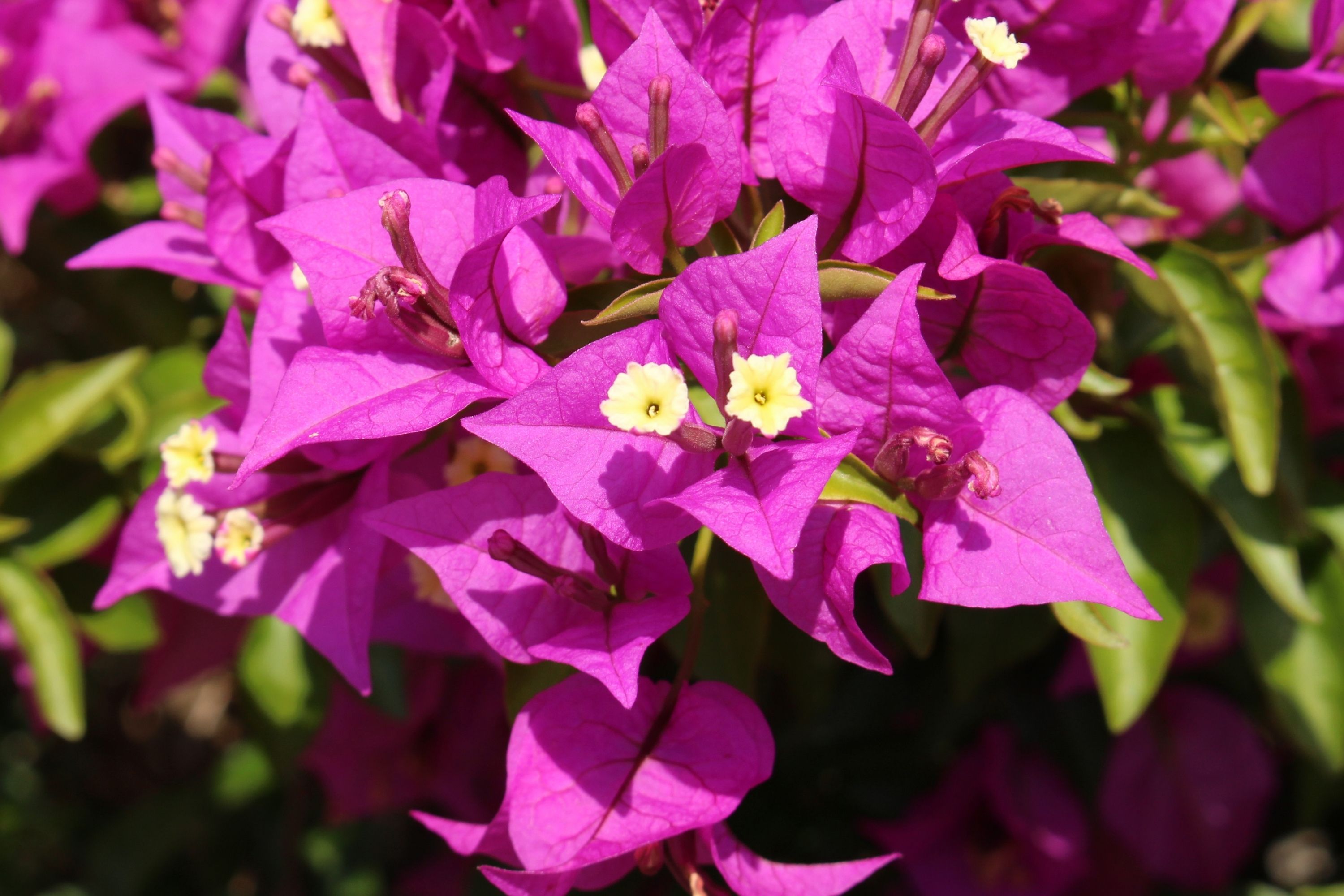Paperflower
(Bougainvillea glabra)

Description
Bougainvillea glabra is a species of flowering plant in the family Nyctaginaceae. It is native to Brazil and is commonly known as the paperflower or lesser bougainvillea. The plant is widely cultivated for its attractive, colorful flowers, which can range from pink and red to orange and purple. In this article, we will explore the characteristics, cultivation, and care of Bougainvillea glabra. Characteristics Bougainvillea glabra is a woody, evergreen vine that can grow up to 10 meters in length. The plant has small, ovate leaves that are 4 to 13 centimeters long and 2 to 6 centimeters wide. The leaves are green and smooth on the upper surface, but have fine hairs on the underside. Bougainvillea glabra produces a profusion of small, white or yellowish flowers, which are surrounded by three to six brightly colored bracts. The bracts can be pink, purple, red, orange, or white, and are usually larger and more showy than the actual flowers. Cultivation Bougainvillea glabra is a hardy plant that can thrive in a variety of conditions. It prefers full sun and well-drained soil, but can tolerate some shade and soil that is slightly acidic or alkaline. The plant is drought-tolerant and does not require frequent watering once established. Bougainvillea glabra can be propagated from cuttings, which should be taken in the spring or summer when the plant is actively growing. The cuttings should be about 10 centimeters long and stripped of their lower leaves. They can be rooted in a well-draining potting mix, and should be kept warm and moist until they develop roots. Care Bougainvillea glabra is a low-maintenance plant that requires minimal care. However, there are a few things you can do to keep your plant healthy and thriving. Here are some tips: Watering: Bougainvillea glabra does not require frequent watering, but it should be watered deeply when the soil is dry to the touch. Avoid overwatering, as this can cause root rot. Fertilizing: Bougainvillea glabra benefits from regular fertilization during the growing season. Use a balanced fertilizer that is high in potassium and phosphorus, but low in nitrogen. Pruning: Bougainvillea glabra can become unruly if left to grow unchecked. Prune the plant regularly to control its size and shape. Cut back any dead or damaged branches, and remove any growth that is taking over nearby plants or structures. Pests and Diseases: Bougainvillea glabra is generally resistant to pests and diseases, but it can be susceptible to mealybugs, scale insects, and spider mites. Monitor your plant regularly for signs of infestation, and treat with an insecticidal soap or neem oil if necessary. Uses Bougainvillea glabra is primarily grown for its colorful bracts, which make it a popular ornamental plant in gardens and landscapes. The plant can be trained to climb trellises or walls, or can be grown in containers as a patio or balcony plant. Bougainvillea glabra is also used as a natural dye, and the bracts can be boiled to produce a pink or purple color. Conclusion Bougainvillea glabra is a beautiful and versatile plant that can add a splash of color to any garden or landscape. With its hardy nature and low-maintenance requirements, it is an excellent choice for both novice and experienced gardeners.
Taxonomic tree:







